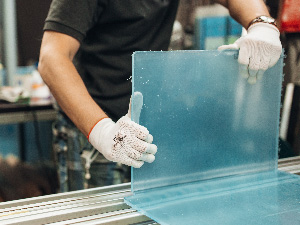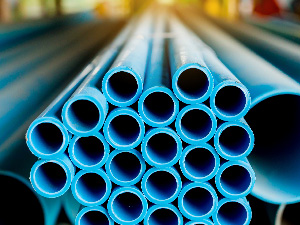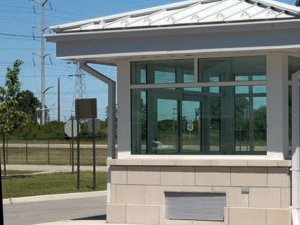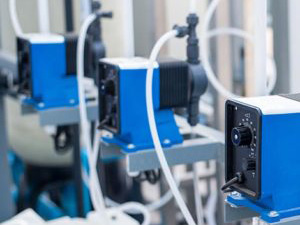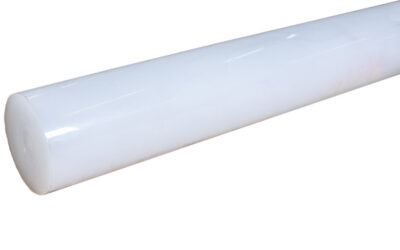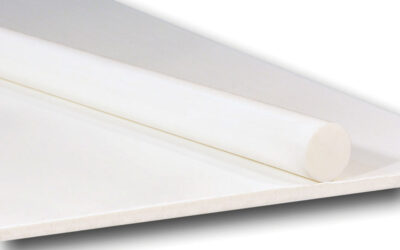Many industries are switching from traditional materials like metals to engineering plastics for key mechanical applications. Plastics are significantly lighter than metals and offer several performance benefits.
Industrial PVC/CPVC
About Industrial PVC/CPVC
PVC is an amorphous thermoplastic material, with a range of continuous use temperatures varying by type (Type I, Type II or CPVC).
PVC Type I has a range of 32° F (0° C) to 140° F (60° C). When compared to other amorphous materials Type I PVC is a more chemically resistant, non-flammable, low-cost plastic for use in a variety of applications. It has high impact strength suitable for fabrication, machining, welding, bonding and thermoforming applications. Type I PVC demonstrates good resistance when exposed to chemicals or oxidizing media, and can withstand a wide variety of harsh industrial and mechanical environments. It can be readily cut, drilled, tapped, routed and otherwise machined using conventional tools, and can be brake formed (thinner gauges), heat welded, adhesive bonded and mechanically fastened, allowing rapid fabrication of a broad range of high-integrity parts and assemblies.
PVC Type II has a range of -4° F (-20° C) to 140° F (60° C). It is categorized as a standard material, and offers easy processability along with high strength and stiffness. PVC Type II offers higher impact strength than PVC Type I, is slightly better when exposed to chemicals, and is better in lower temperatures. Since PVC Type II has a slightly better chemical resistance it is better with organic and inorganic chemicals, as well as oxidizing agents. It provides excellent electrical insulation properties and can be cut, routed, hot-gas welded, cold and heat bent, vacuum formed and glued.
CPVC has a range of -12° F (-24° C) to 212° F (100° C). It is categorized as a standard material, and offers extreme chemical resistance, high heat distortion temperature and extremely low water absorption.
CPVC is modified by chlorination, resulting in a material with a higher heat resistance that is readily workable, including machining, welding, and forming. CPVC is used in applications involving harsh acids, bases and other caustic chemicals. Because of its excellent corrosion resistance at elevated temperatures, CPVC is ideally suited for applications where operating temperatures reach 200 °F (90 °C). Since CPVC is fire-retardant, easy to form, and can be welded it enables it to be used in a wide variety of processes and applications. It is extensively used for hot water pipe and fittings, particularly in commercial and multi-housing construction.
Material Benefits
Chemical resistance
Highly impact strength/stiffness

Easy to fabricate and process

Excellent electrical insulation
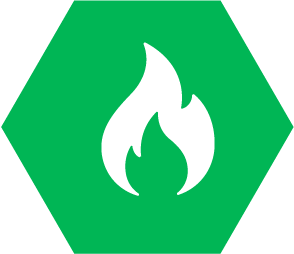
Low flammability rating
Smooth surface (Type I)
High heat distortion temperature (CPVC)
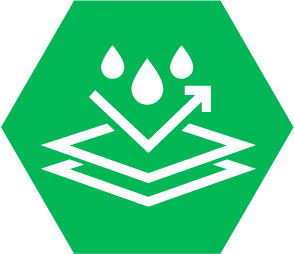
Extremely low moisture absorption (CPVC)
Applications & Industries
Water & Wastewater
Performance plastics are safe, durable, long-lasting, light weight, and low maintenance, making them a great solution in water and wastewater treatment plants.
Building & Construction
Polymershapes can equip your next project with high quality plastic building materials that will not splinter, warp, rot, or delaminate. Building and construction plastics provide UV and corrosion resistance, impact resistance, and other qualities that protect the integrity of your construction project.
Chemical
Materials used in applications in the chemical, oil and gas segments typically must meet very specific performance requirements.
Related & Associated Products
PVDF (Polyvinylidene Fluoride)
PVDF (polyvinylidene fluoride), sometimes known by the tradename Kynar®, is an engineering thermoplastic offering high purity, excellent chemical resistance, flame resistance, and abrasion resistance. Easy to weld, PVDF is often seen semiconductor equipment, tank liners, and various seals, fittings, valves, and pump parts.
PVC-Acrylic
PVC-Acrylic is a thermoformable, high-impact, fire-rated sheet for a variety of aerospace and industrial applications.
PPS (Polyphenylene Sulfide)
PPS (Polyphenylene Sulfide) is a tough, high-performance engineering thermoplastic featuring high dimensional stability.
WE’RE HERE TO HELP
Do you have more questions about the right plastics for your special project? Any technical questions that our website hasn’t answered? Reach out! One of our plastics experts will be happy to assist you.
Have a Project? Get in Touch Today!
Our materials experts will help identify the right solution for your application, put together a quote and a detailed timeline.
Stay Informed with Our Newsletter
Be the first to see our latest promotions, new materials and valuable informative content by signing up for our newsletter.

